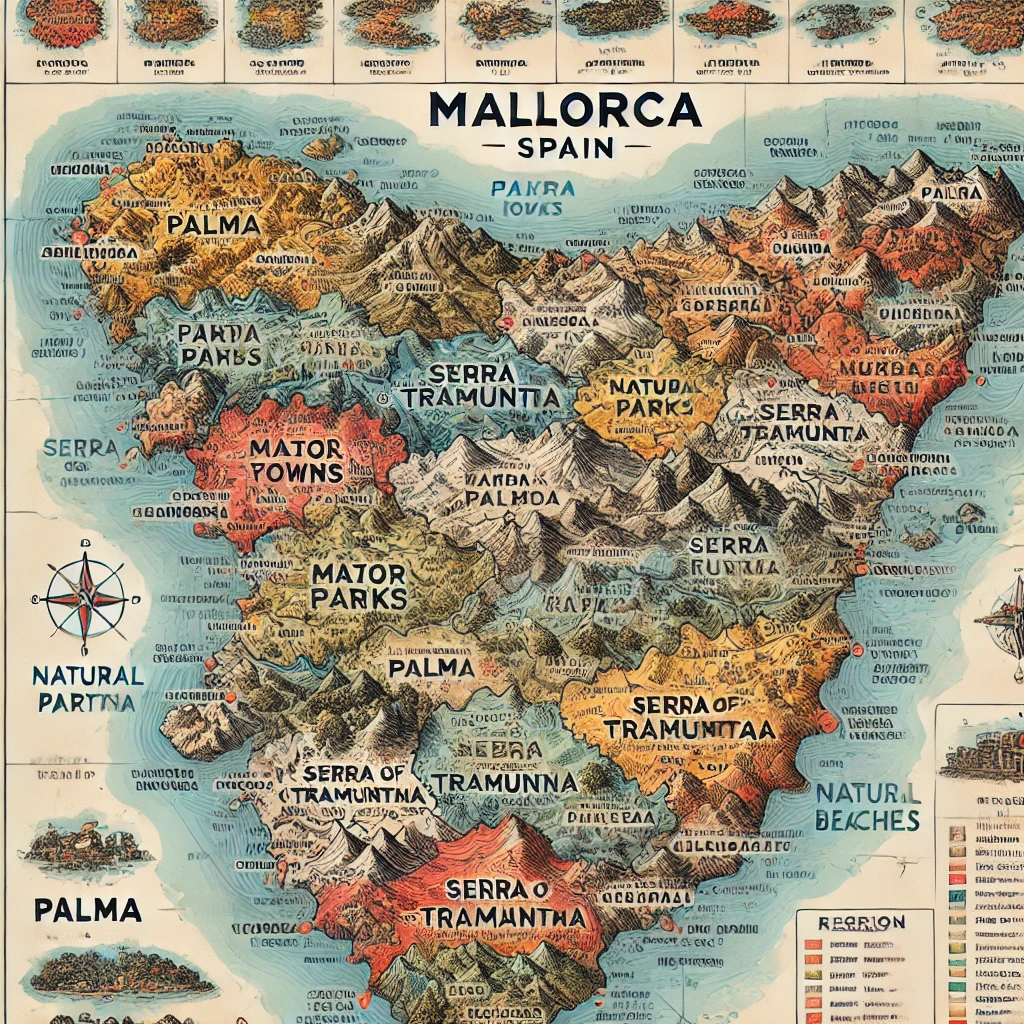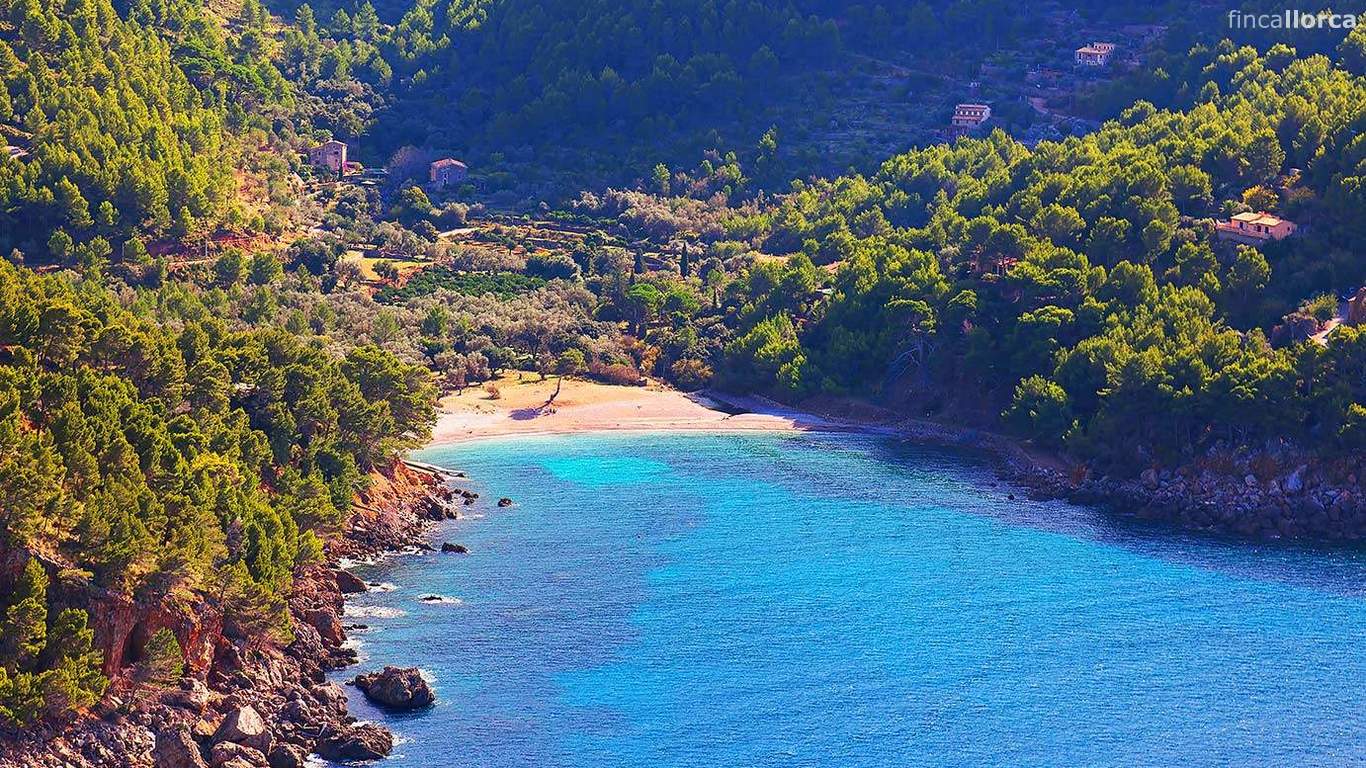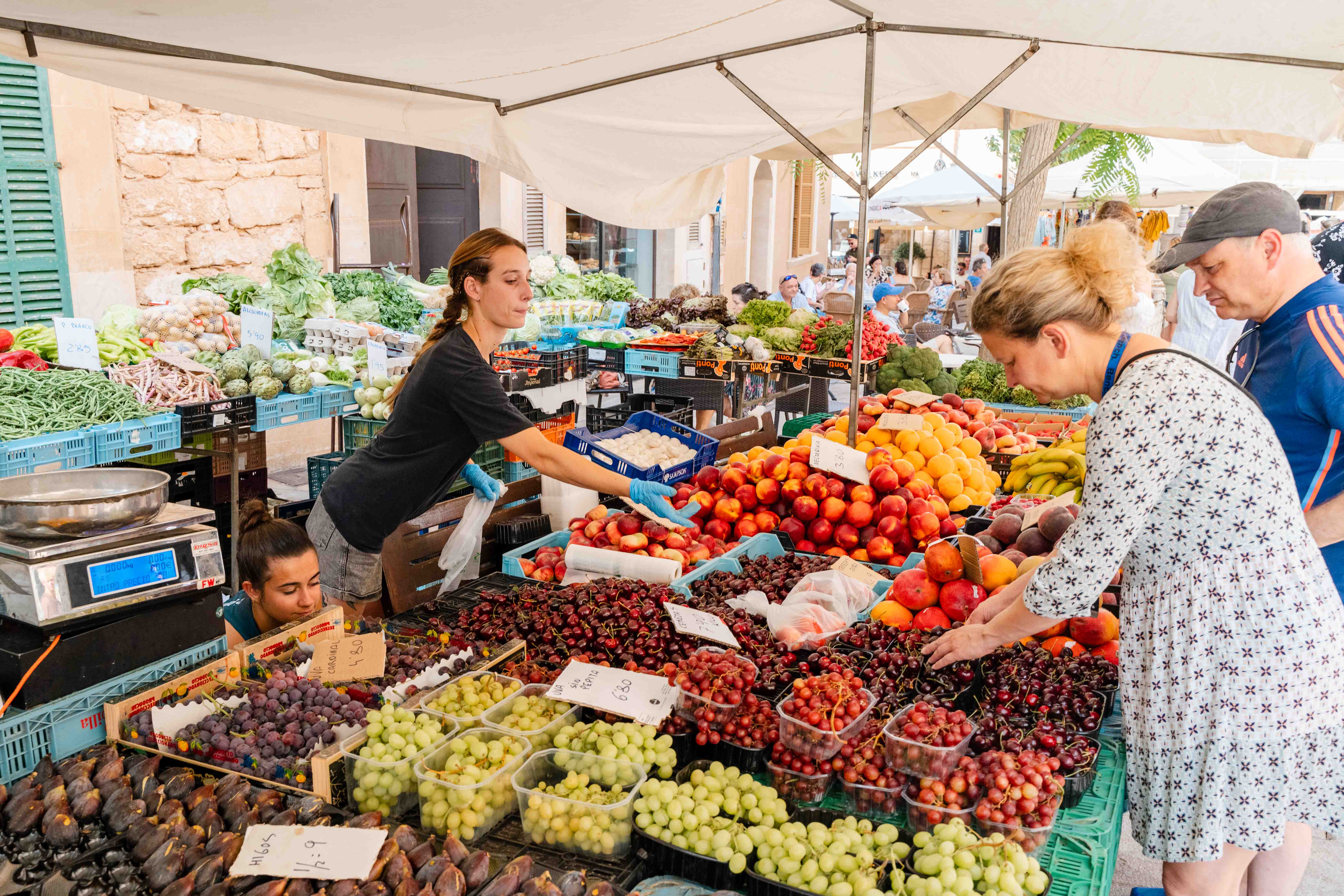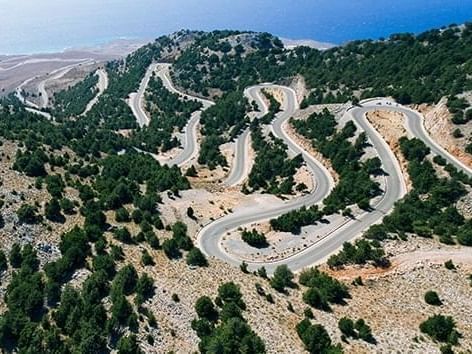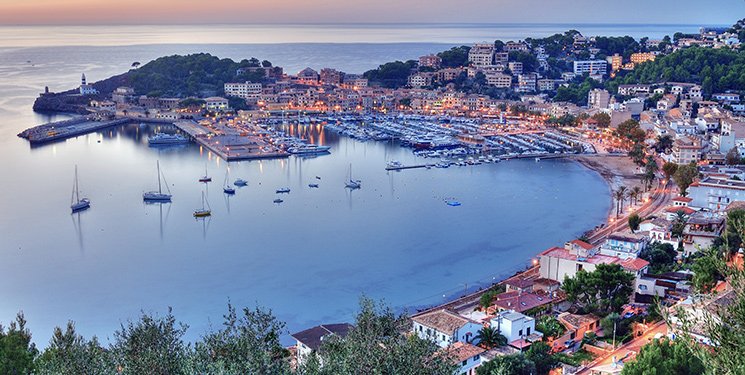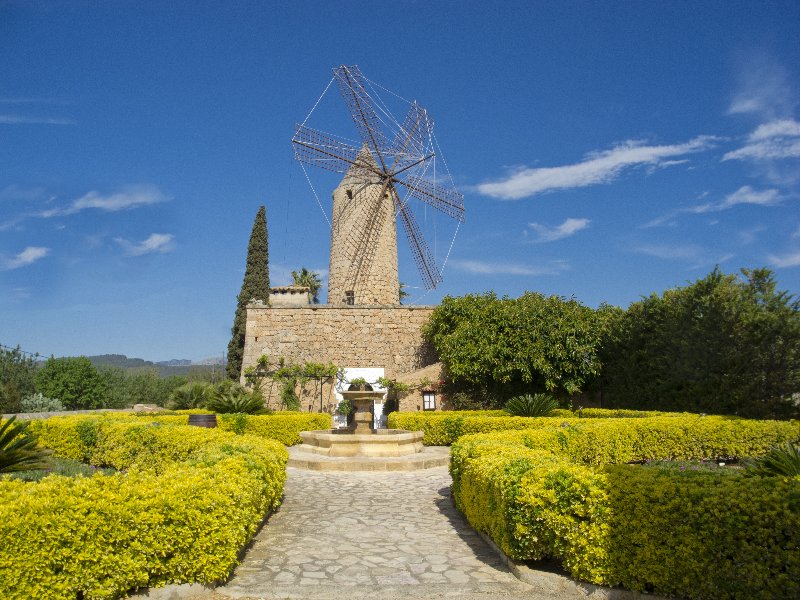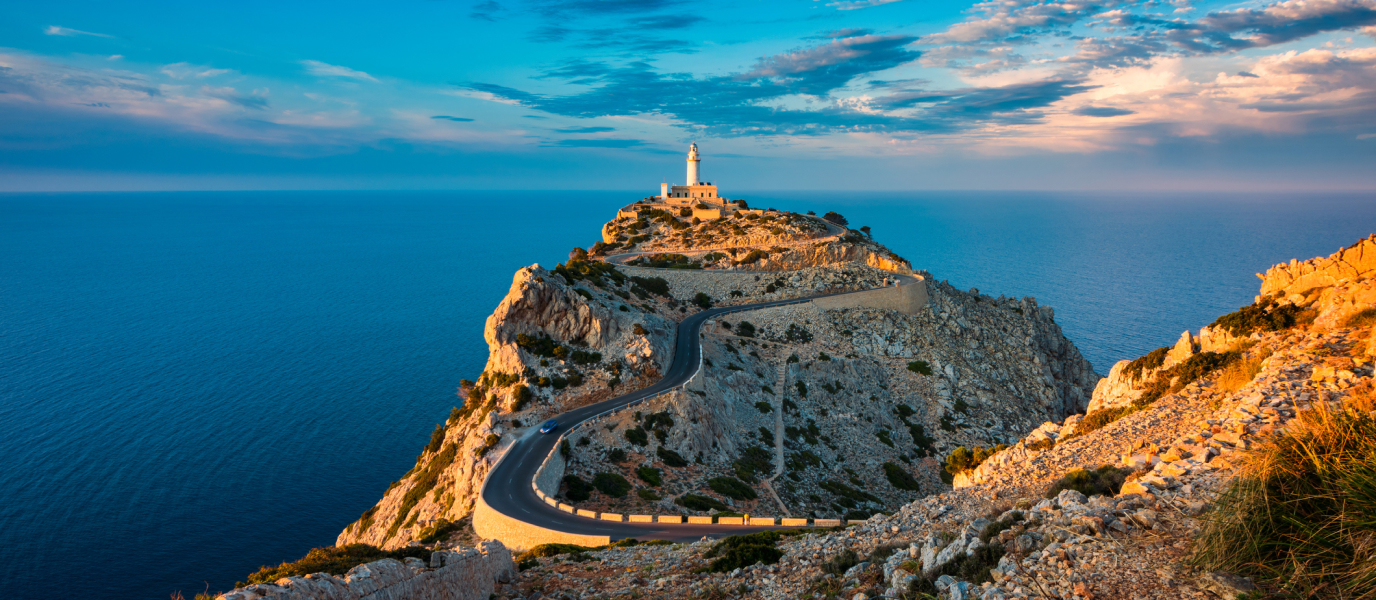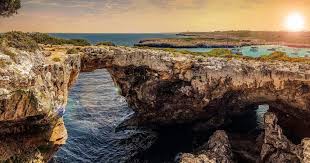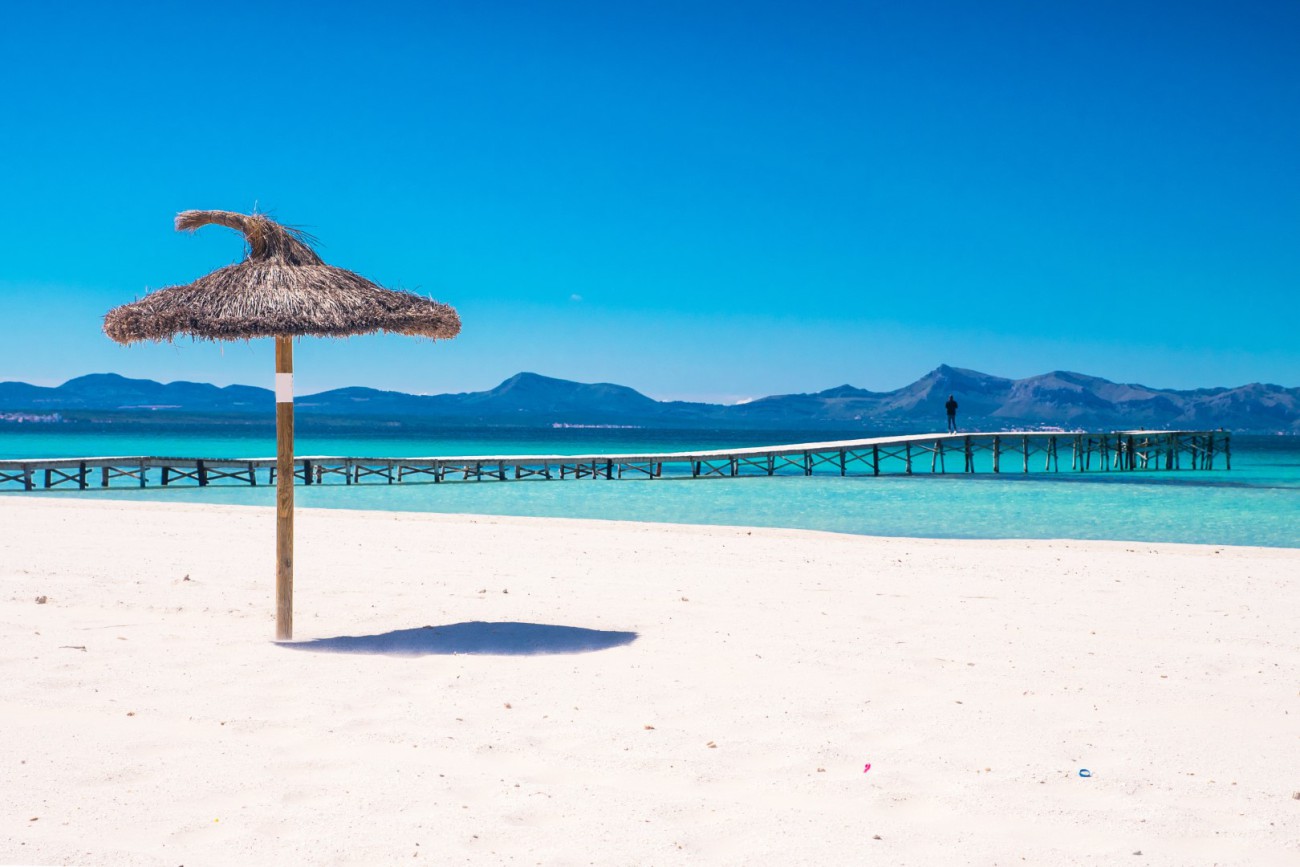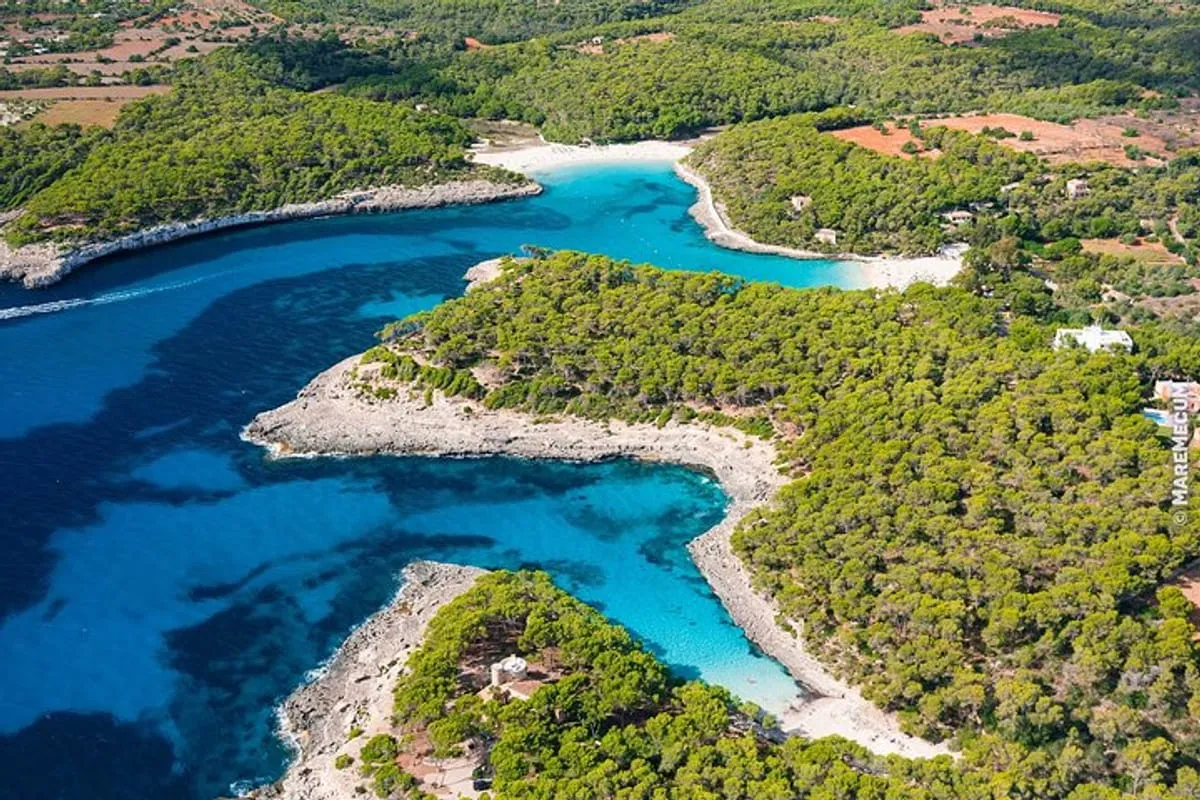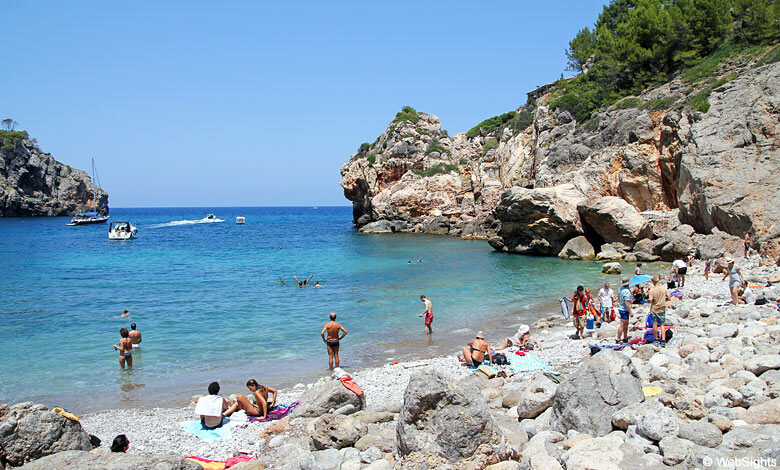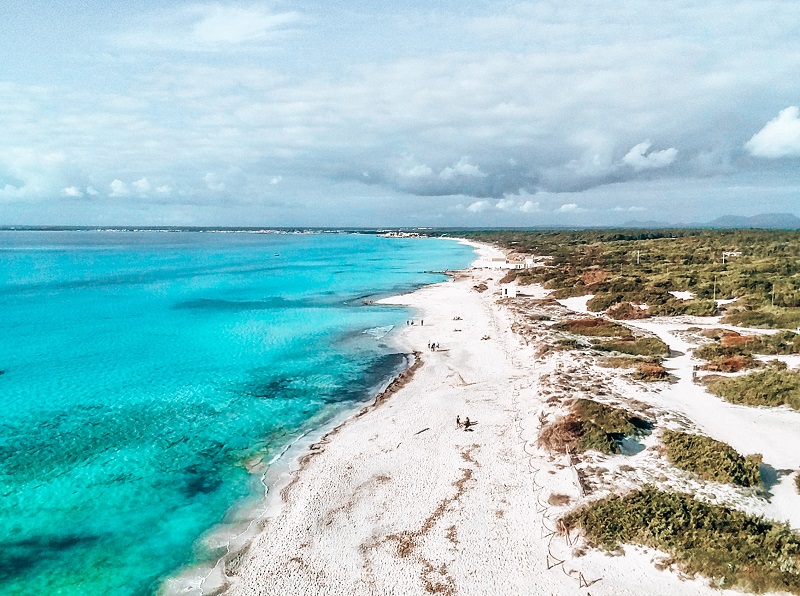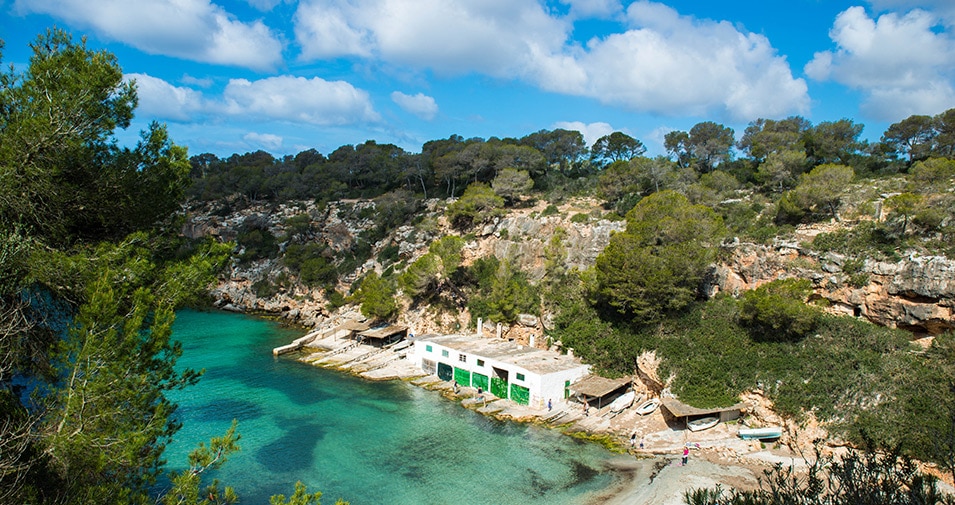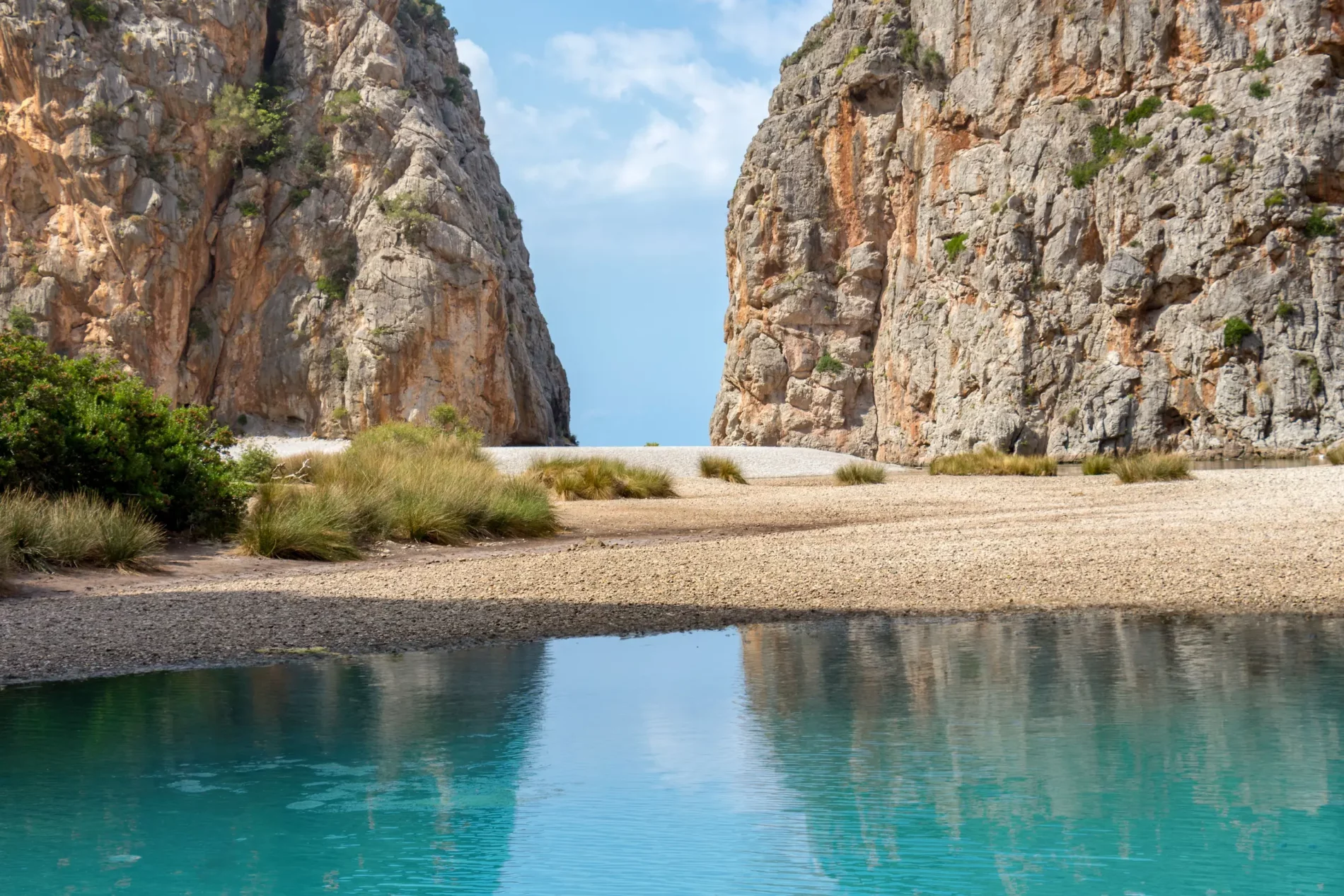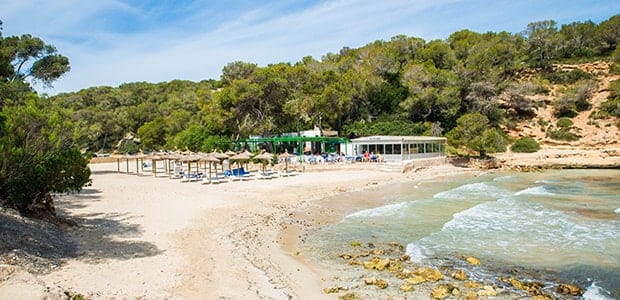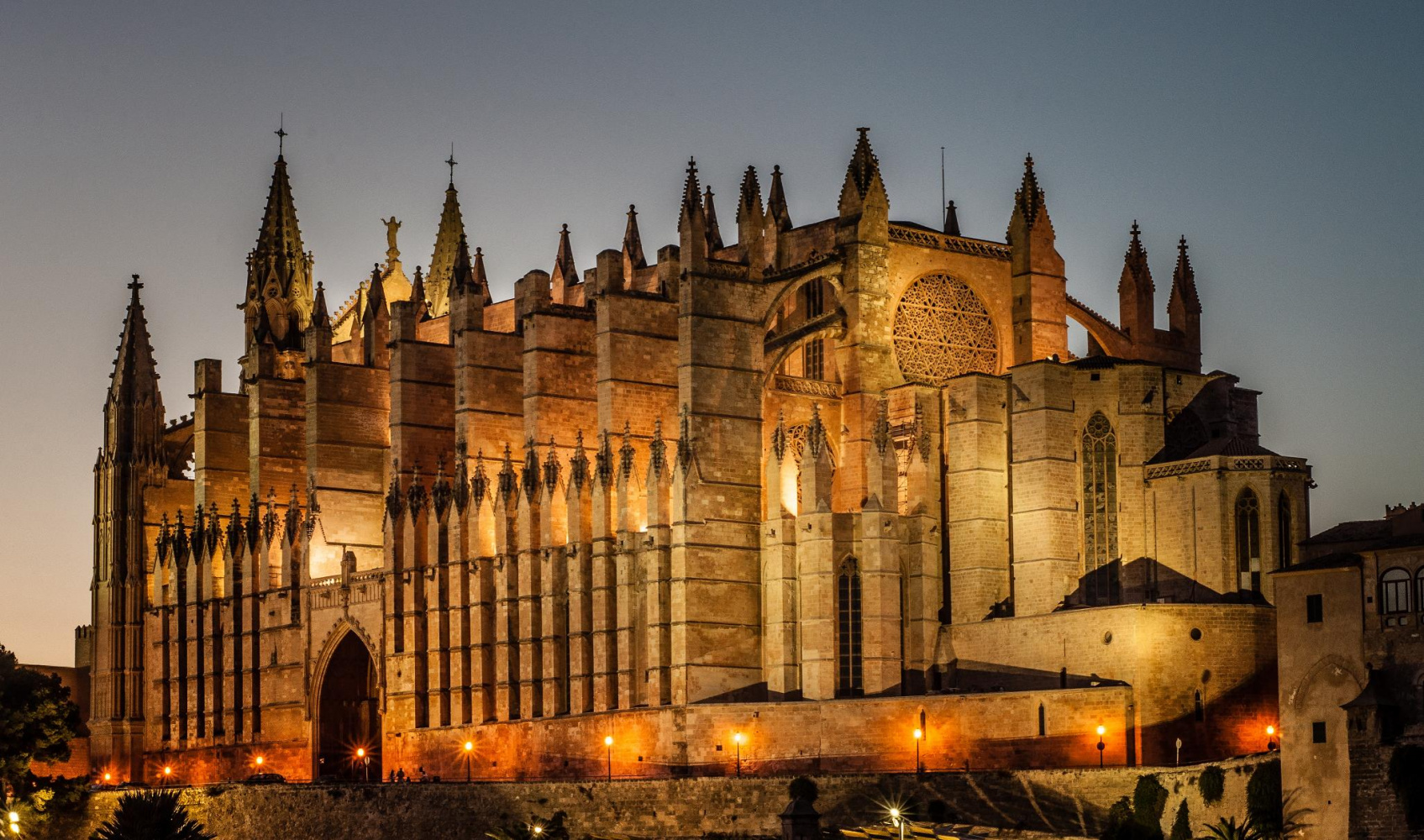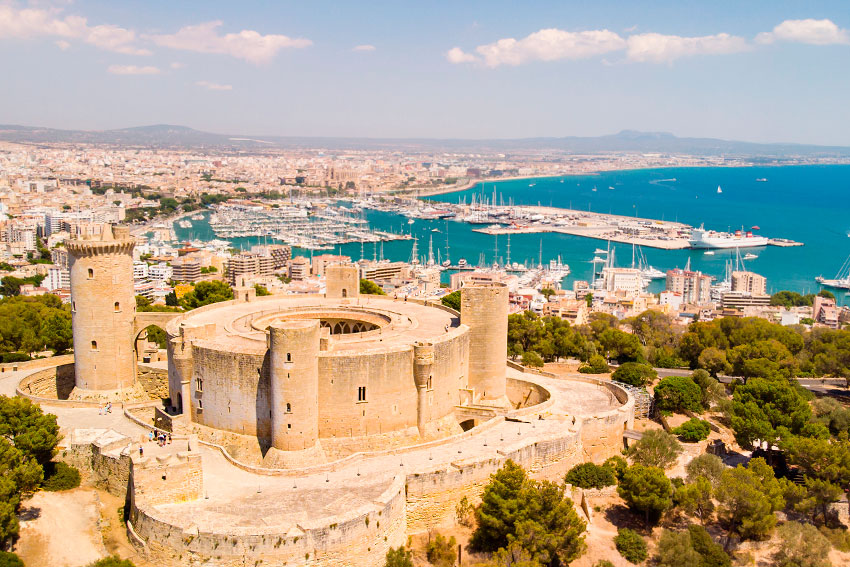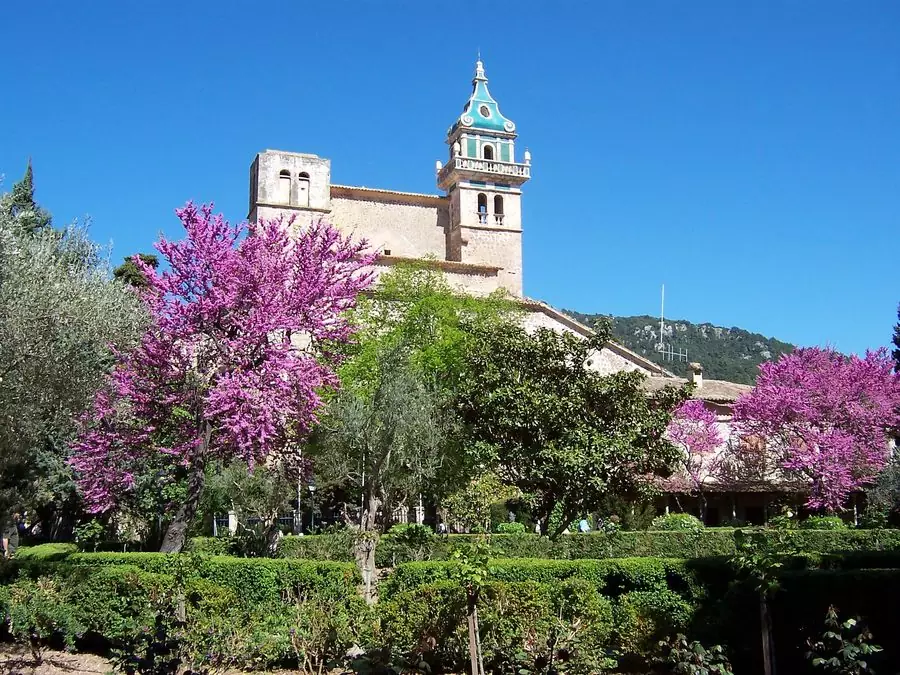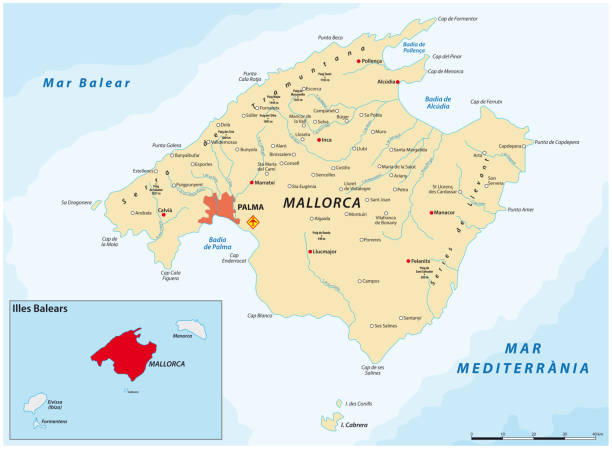Must-Visit Places In Mallorca For 2025 [Mapped For You]
See the must-visit places in Mallorca for 2025 with a mapped guide to top sights, hidden gems, and scenic spots. Plan your trip with ease using our expert insights.
Author:Michael RachalReviewer:Finn WildeApr 28, 20257.3K Shares199.4K Views
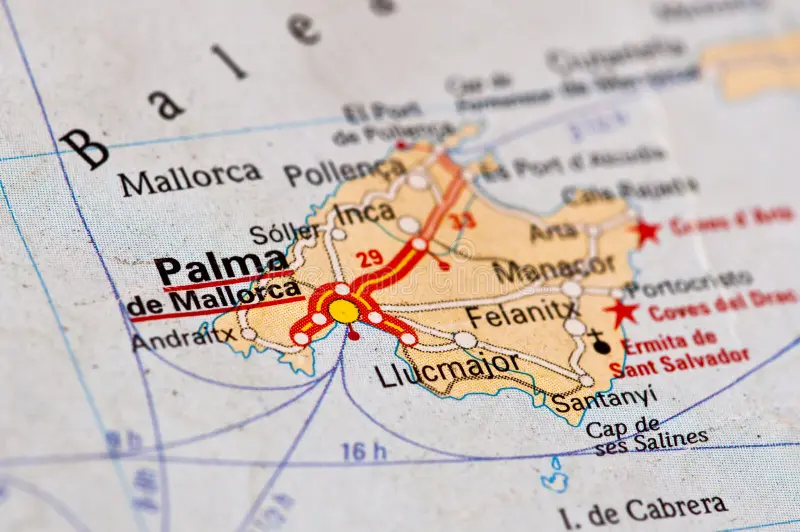
Mallorca, the largest of Spain’s Balearic Islands, is a destination that effortlessly blends natural beauty, rich culture, and endless adventure. From pristine beachesto historic landmarks, the island offers something for every type of traveler.
Planning your trip with a reliable map not only ensures you visit the iconic spots but also unveils hidden treasures that make Mallorca truly unforgettable. A detailed map of Mallorca helps you navigate the island with ease, pinpointing must-visit locations while guiding you to lesser-known attractions that add to its charm.
This guide will give you a decent overview of what to visit and offer tips on how to navigate the island efficiently. Perhaps you're touring the breathtaking coastline, seeing historic sites, or looking for hidden gems, Mallorca promises to be an adventure of discovery. Let's talk about the must-see sights and how a map could be your most useful travelcompanion.
Regions On The Map Of Mallorca
1. Tramuntana Region
The Tramuntana Mountains in western and northern Mallorca offer dramatic peaks, lush valleys, and charming villages steeped in history. Valldemossa enchants with its Real Cartuja monastery, while Deià attracts artists with its serene beauty. Sóller, located among citrus groves, connects to Palma via a vintage train, and Fornalutx is famed for its stone houses and stunning views. This UNESCO World Heritage site is a haven for hikers and food lovers, featuring local olive oils and wines.
2. Central Plains (Es Pla De Mallorca)
The agricultural heart of Mallorca, Es Pla, showcases rolling fields and traditional villages. Sineu’s vibrant Wednesday market and Petra’s tribute to Fray Junípero Serra are cultural highlights. Artà impresses with its artisan community and the Sant Salvador Sanctuary, while Santa Margalida offers a taste of rural life. The region is perfect for those seeking tranquility and authentic farm-to-table cuisine.
3. Llevant Region (East Mallorca)
East Mallorca blends rolling hills, serene countryside, and historic villages. Artà charms with its markets and medieval roots, while Capdepera boasts a striking castle. Manacor, known for pearls and tennis star Rafael Nadal, offers a mix of tradition and modernity. Felanitx, surrounded by vineyards, features the Sant Salvador Sanctuary with sweeping views. This region is ideal for relaxed exploration and indulging in local crafts.
4. Raiguer Region (North-Central Mallorca)
Between the Tramuntana Mountains and central plains, the Raiguer Region is a hub of vineyards, olive groves, and quaint towns. Binissalem leads Mallorca’s wine culture, while Alaró’s hilltop castle offers both history and scenic vistas. Santa Maria del Camí draws visitors with its lively Sunday market, and Lloseta provides a peaceful retreat. This region combines cultural richness with natural beauty.
5. Migjorn Region (South Mallorca)
Migjorn, in southern Mallorca, is marked by flatlands and rural charm. Campos is a quiet town near pristine beaches, and Ses Salines is known for its historic salt production. Porreres features almond orchards that bloom spectacularly in spring, while Llucmajor offers a mix of history and proximity to the Randa mountains. Migjorn’s tranquil landscapes are ideal for unwinding and enjoying traditional Mallorcan flavors.
6. Palma Region (West-Central Mallorca)
Beyond Palma’s bustling capital lies a quieter side, with villages like Esporles, home to La Granja, a museum of Mallorcan traditions. Estellencs offers stunning coastal views, while Puigpunyent is surrounded by lush hills and luxury retreats. This region balances rural serenity with urban amenities, perfect for those seeking both cultural and natural experiences.
Hidden Gems Worth Visiting
1. Cala Tuent
Located along Mallorca’s rugged northwest coast, Cala Tuent is a secluded paradise that offers a refreshing escape from the island’s busier beaches. Framed by the dramatic peaks of the Serra de Tramuntana, this small pebble beach is surrounded by lush greenery and rugged cliffs, creating an idyllic and serene setting.
2. Santanyí Market
In the heart of the charming town of Santanyí lies one of Mallorca’s most vibrant and authentic markets. Held every Wednesday and Saturday, the Santanyí Market transforms the town square into a bustling hub of local life. Stalls overflow with colorful fresh produce, aromatic spices, artisanal cheeses, and an array of handmade crafts and textiles.
3. Sa Calobra
Famous for its jaw-dropping natural beauty and dramatic access road, Sa Calobra is a destination that feels like an adventure in itself. The winding drive to Sa Calobra, known as the snake road, is an exhilarating experience with hairpin turns and stunning mountain views. Upon arrival, visitors are greeted by a breathtaking mix of towering cliffs and turquoise waters.
Mallorca's Towns And Villages (Inland Treasures)
1. Valldemossa - A Historic Mountain Gem
One of Mallorca's most well-known communities is Valldemossa, which is tucked away in the Tramuntana Mountains. For generations, poets, singers, and artists have drawn inspiration from this region, which is well-known for its breathtaking landscapes and extensive history.
Must-See Attractions:
- Royal Carthusian Monastery:A historic site where composer Frédéric Chopin and writer George Sand spent a winter.
- Charming Streets:Explore the flower-adorned lanes and enjoy panoramic mountain views.
Local Tip: Try the coca de patata, a delicious potato pastry, with a cup of hot chocolate at a local café.
2. Deià - The Artist’s Paradise
A short drive from Valldemossa, Deià is a tiny village perched on the slopes of the Tramuntana range. Its bohemian vibe and breathtaking views of the Mediterranean Sea make it a haven for artists and creatives.
What to see:
- Son Marroig:A historic mansion offering incredible views of the coastline.
- Art Galleries:Check out local art inspired by Deià's natural beauty.
Insider Tip:Visit the Cala Deià, a secluded rocky cove, for a tranquil swim or fresh seafood by the sea.
3. Sóller - The Valley Of Oranges
Sóller is a charming town set in a valley surrounded by citrus orchards and olive groves. It is famous for its historic tram and train connections to Palma, as well as its vibrant main square.
Highlights:
- Sóller Train:Take a scenic ride on the vintage wooden train from Palma to Sóller.
- Plaza Constitución: Enjoy the lively square, lined with cafés, restaurants, and the striking Church of Sant Bartomeu.
- Local Flavor:Don’t miss the orange ice cream, made from the town’s renowned citrus fruits.
4. Pollença - Rich History And Culture
Located in the northern part of Mallorca, Pollença is a town with a rich cultural heritage. Its blend of history and stunning surroundings makes it a favorite among visitors.
Places to Visit:
- Calvari Steps:Climb the 365 steps to the Calvari Chapel for panoramic views of the town and countryside.
- Sunday Market:Browse local crafts, fresh produce, and traditional goods in the main square.
- Festival Highlight:If visiting in August, witness the mock battle of the Moors and Christians, an energetic local tradition.
5. Artà - The Heart Of Mallorca’s Countryside
Artà is a peaceful inland town surrounded by almond groves and rolling hills. Known for its medieval charm and artisan culture, it’s a must-visit for those seeking a slower pace.
What to see:
- Sant Salvador Sanctuary:A hilltop fortress with sweeping views of the region.
- Artisan Shops:Discover locally made crafts, from pottery to handmade textiles.
Local Tip:Visit during the almond blossom season (January-February) to see the countryside blanketed in pink and white.
6. Alaró - A Gateway To Scenic Adventures
This small village at the base of the Tramuntana Mountains is a favorite starting point for hikers and outdoor enthusiasts.
- Castell d’Alaró:Hike to the ruins of this historic castle for unbeatable views of the island.
- Local Eateries:Savor traditional Mallorcan dishes at rustic restaurants, such as lomo con col (pork with cabbage).
Travel Tip:Alaró is an excellent base for visiting nearby hiking trails.
7. Santa Maria Del Camí - A Wine Lover’s Haven
Located near Palma, Santa Maria del Camí is the perfect destination for wine enthusiasts and those interested in traditional Mallorcan products.
What to do:
Wine Tasting:Visit local vineyards and wineries for tastings of Mallorca’s renowned wines.
Sunday Market:See everything from fresh produce to locally crafted goods.
Local Insight:Look for the binissalem wine label, a mark of high-quality Mallorcan wine.
8. Petra - The Birthplace Of A Missionary
Petra is a small but historically significant town, as the birthplace of Junípero Serra, the Franciscan friar who founded several missions in California.
Historical Sites:
- Casa Museu Junípero Serra:Learn about the life and legacy of this influential figure.
- Sant Pere Church:Admire the impressive architecture of this 16th-century church.
- Local Traditions: Experience the quiet charm of Petra’s slow-paced lifestyle and friendly locals.
Must-See Natural Wonders
- Serra de Tramuntana: A UNESCO World Heritage Site, this mountain range offers dramatic cliffs, winding roads, and panoramic views. Perfect for hiking, cycling, or simply enjoying the vistas, it’s a nature lover’s paradise.
- Cuevas del Drach (Dragon Caves): Located near Porto Cristo, these caves are a spectacular underground world of stalactites and stalagmites. A highlight is the underground lake, where you can enjoy a magical classical music concert.
- Cap de Formentor: Known as “The Meeting Point of Winds,” this northernmost point of the island boasts jaw-dropping cliffs and stunning ocean views. The drive to the lighthouse is as breathtaking as the destination itself.
Best Beaches And Coves In Mallorca
1. Cala Varques
Cala Varques is a secluded haven on the eastern coast of Mallorca. This immaculate cove, which is surrounded by lush pine forests and limestone cliffs, is reachable by a short stroll. Adventurers, swimmers, and cliff divers looking for peace and quiet away from the masses are drawn to its blue waters and natural arches.
2. Cala Agulla
Located in the northeast, Cala Agulla is surrounded by lush pine woods and golden dunes. Its clear waters are ideal for snorkeling, and the beach is large enough to accommodate families and sunseekers without feeling overcrowded. Nearby trails offer panoramic views of the coastline, making it a favorite for nature lovers.
3. Playa De Muro
Playa de Muro, which runs along the Bay of Alcúdia, is one of Mallorca's longest beaches. Families will love its shallow, peaceful waters, and convenience is guaranteed by the restaurants and facilities close by. It's a great option for anyone who want to unwind because of the fine sand and peaceful atmosphere. If you're planning a trip, make sure to check out other things to see in Mallorca, from charming villages to breathtaking coastal views.
4. Cala Mondragó
Situated in a protected natural park in the southeast, Cala Mondragó is a stunning double cove surrounded by pine forests. Its vibrant waters and unspoiled surroundings make it a top pick for nature enthusiasts. The nearby hiking trails offer a chance to explore the area's natural beauty.
5. Cala Deià
This small pebble cove in the Tramuntana Mountains is beloved for its dramatic cliffs and crystal-clear waters. Often frequented by artists and locals, Cala Deià offers a rustic charm. A beachfront restaurant serves fresh seafood, adding to the experience of this peaceful retreat.
6. Cala Mesquida
Located in northeast Mallorca, Cala Mesquida is famous for its windswept dunes and rugged beauty. Its strong breezes attract windsurfers, while the shallow waters near the shore are safe for families. It’s a unique blend of adventure and serenity.
7. Es Trenc
Known as Mallorca’s most iconic beach, Es Trenc is a natural stretch of white sand and turquoise waters in the south. It offers a Caribbean-like ambiance and a relaxed atmosphere. Despite its popularity, Es Trenc remains unspoiled, with no large resorts nearby, making it a true gem.
8. Cala Pi
This southern cove is named after the surrounding pine trees that create a serene, shaded atmosphere. Steep cliffs frame its calm waters, making it a haven for families and snorkelers. Ancient watchtowers add a historic touch to the natural beauty of this picturesque spot.
9. Sa Calobra And Torrent De Pareis
Accessible via a winding mountain road, Sa Calobra is a dramatic cove where steep cliffs meet the sea. The nearby Torrent de Pareis gorge, with its striking rock formations, is a favorite among hikers and photographers. The blend of rugged nature and crystal-clear waters makes it one of Mallorca’s most unique destinations.
10. Portals Vells
Portals Vells, a group of three little coves encircled by limestone cliffs, lies tucked away on the southwest coast. Nearby caverns and a tiny chapel provide an interesting touch, while the serene waters are ideal for swimming. Only a short drive from Palma, it's a peaceful haven.
Historic And Cultural Landmarks
1. Palma Cathedral (La Seu)
Standing as a symbol of Mallorca’s rich history, Palma Cathedral, known locally as La Seu, is a magnificent example of Gothic architecture. Situated along Palma's waterfront, the cathedral dominates the city’s skyline with its towering spires and intricate façade. Construction began in 1229, but it wasn’t fully completed until 1601, reflecting centuries of craftsmanship. Inside, visitors are greeted by vast vaulted ceilings, vibrant stained glass windows, and a rose window that floods the interior with kaleidoscopic light.
2. Bellver Castle
Bellver Castle, one of the few circular castles in Europe and a prime example of Gothic architecture from the 14th century, stands on a hill with a view over Palma. Originally constructed as a royal house during the time of King James II of Mallorca, the castle was later converted into a military jail. It now serves as the home of the Palma History Museum, which provides guests with an insight into the island's intriguing past. The unique circular design of the castle has three massive towers and arches encircling a central courtyard.
3. Valldemossa Monastery
The Royal Charterhouse of Valldemossa, hidden in the quiet Tramuntana Mountains, is a veritable gold mine of culture, history, and scenic splendor. The structure was transformed into a Carthusian monastery after serving as a royal house in the early 14th century.
The location is arguably most well-known for housing the writers George Sand and Frédéric Chopin in the winter of 1838-1839. Sand's memoir, A Winter in Mallorca, was inspired by their time spent in Valldemossa. When planning your visit, considering some Mallorca travelling tipscan help you make the most of your journey, from choosing the best time to visit to navigating the island efficiently.
Types Of Mallorca Maps
To make the most of your trip, having the right map is essential. Here are the best options:
- Digital Maps: Apps like Google Maps and Maps.me are reliable and can be downloaded for offline use. They’re perfect for navigating both urban areas and rural trails.
- Printed Maps: These are often available at tourist offices and provide a detailed overview of Mallorca’s regions. They’re great for a traditional approach and as a backup.
- Interactive Online Maps: Mallorca’s official tourism website often provides interactive maps that highlight key attractions, hiking trails, and local tips.
How To Plan Your Mallorca Itinerary With A Map
- Divide the Island by Regions: Sort the northern, southern, eastern, and western parts of Mallorca on your itinerary. Take one day, for instance, for touring the beaches in the south and the Serra de Tramuntana in the north.
- Group Nearby Attractions: Use your map to cluster attractions close to each other. For instance, combine a visit to Bellver Castle with Palma Cathedral and nearby markets.
- Include Hidden Gems: Mark lesser-known spots on your map to add a unique touch to your journey. This ensures your trip is a mix of famous landmarks and off-the-beaten-path experiences.
FAQs
Why Is Mallorca So Famous?
Mallorca is known for its beautiful coastline, secluded coves, limestone mountains, Spanish architecture, wineries and fresh produce farms, and stunning beaches. From quaint mountain villages to dynamic nightclubs, you'll have no trouble finding an adventure that matches your mood and liking.
Which Side Of Mallorca Is The Best?
The east side of Mallorca is known for having the most picturesque beaches in all of Mallorca because of the shallow bays and inlets peppered along the coastline. Overall, the east side of the island felt more quiet and less built up with infrastructure than the west.
How Long Is The Boat From Barcelona To Mallorca?
Latest offers for Barcelona - Palma
The ferry crossing from Barcelona to Palma takes approximately 7 hours 40 minutes on ferries servicing this route. The ferry duration for the Barcelona to Palma ferry can range between 7 hours and 8 hours 30 minutes depending on the operator that you decide to travel with.
Do You Need A Car In Mallorca?
A car will allow you the most freedom to explore Mallorca on your own terms. That said, when you're touring various cities and towns especially Palma you should leave the car parked and get around on foot since streets in these historic places are often narrow.
How Many Days In Mallorca Is Enough?
With a mild year-round climate and a choose-your-adventure atmosphere, this sun-soaked island is one of the best year-round destinations in Spain. To see the many faces of this island, I'd recommend spending at least one week in Mallorca but you could easily spend two weeks here soaking it all in.
Final Words
Mallorca’s beauty lies in its diversity, and a good map is your key to unlocking its treasures. From iconic landmarks like Palma Cathedral to serene hidden coves, the island offers endless opportunities for adventure.
By planning with a reliable map, you can ensure your trip is both efficient and unforgettable. Pack your map, mark your spots, and get ready to immerse yourself in all that Mallorca has to offer.

Michael Rachal
Author
Michael Rachal believes that luxury lies in the details. With over 20 years of experience in the luxury travel industry, he has crafted hundreds of bespoke itineraries for clients seeking personalized, unforgettable experiences.
Whether guiding clients through private cultural tours or curating culinary journeys with world-renowned chefs, Michael ensures that each trip is tailored to perfection.
His ability to anticipate needs and exceed expectations has earned him a reputation as a leading expert in luxury travel.
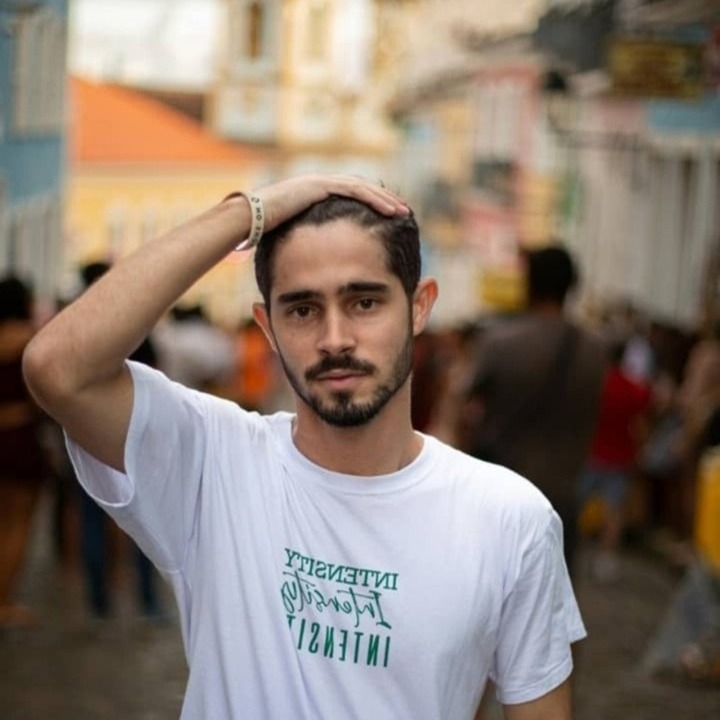
Finn Wilde
Reviewer
For Finn Wilde, the wilderness is more than just a destination - it’s a way of life. Over the past decade, he has led multiple expeditions in some of the world’s most remote regions, from the icy fjords of Greenland to the rugged trails of Patagonia.
Finn emphasizes sustainability in all of his adventures, helping participants connect with nature while promoting responsible exploration. His expeditions inspire individuals to explore the great outdoors while fostering a deep respect for the environment.
Latest Articles
Popular Articles
